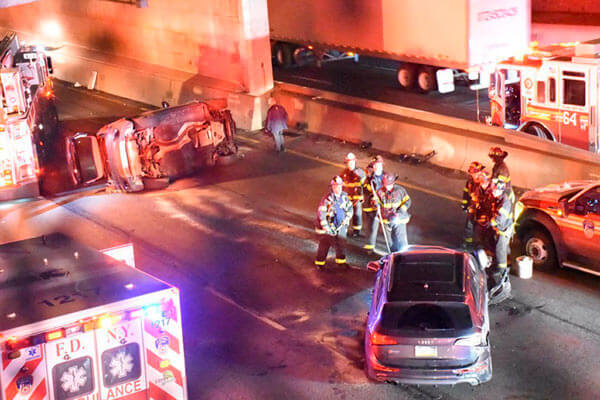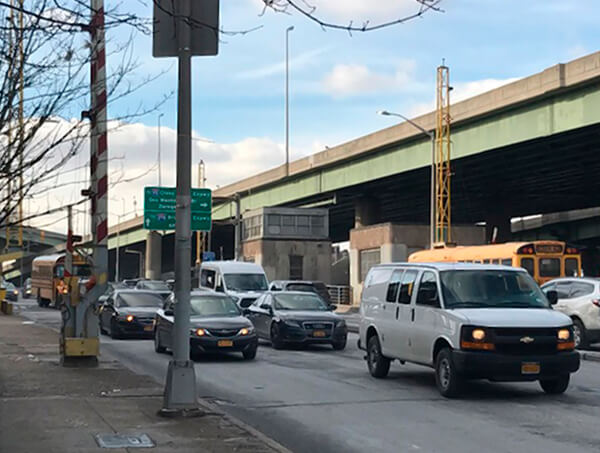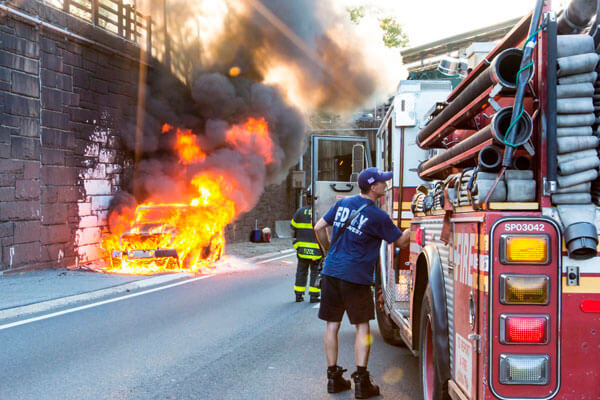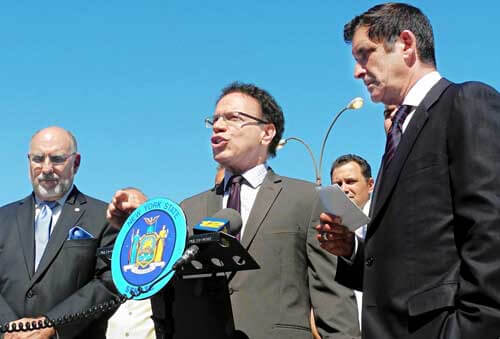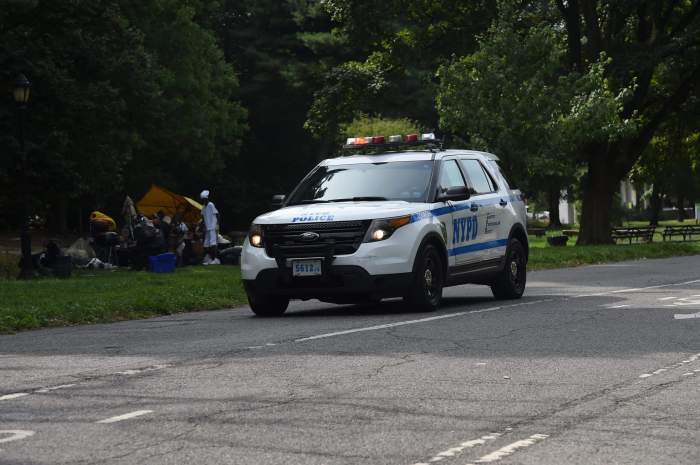New York City Mayor Eric Adams announced Monday morning that his administration will begin reassessing the negative impacts posed by the Cross Bronx Expressway with a new $2 million federal grant — an initiative that has been at the forefront of many Bronxites’ minds since before the highway was constructed in the 1940s.
“It’s about envisioning an equitable, prosperous, healthy and safe Bronx for generations to come,” Adams said at a press conference Monday.
The city obtained $2 million from the U.S. Department of Transportation Rebuilding American Infrastructure with Sustainability and Equity grant program. The funding will be used to conduct a feasibility study that will determine how to improve the expressway — both from an environmental impact and a racial equity lens.
The Cross Bronx Expressway was started by urban planner Robert Moses in 1948, and has long been criticized as a project rooted in environmental racism: The highway divides the borough in half and originally displaced entire neighborhoods — many of which were predominantly Black, brown and immigrant communities — in the process.
Adams said during Monday’s press conference that the grant will begin to address some of these historical problems that Moses created decades ago.
“He got his way then but he’s not getting his way now as we fix the scar that became a permanent fixture on the face of the Cross Bronx Expressway,” the mayor said.
One of the grant’s major champions was U.S. Rep. Ritchie Torres. At the press conference on Monday, he echoed the mayor’s sentiments, stating that the grant to conduct a feasibility study is just one step toward fixing the wrongs of the past in the Bronx.
“The Cross Bronx is both literally and metaphorically a structure of racism,” Torres said.
Additionally, he said studying the environmental impacts of the expressway will also provide a look into different health outcomes in the borough. Communities near the Cross Bronx, Torres said, experience higher rates of asthma and other respiratory illnesses than in other parts of the borough — largely due to the pollution of the highway.
“When it comes to the outdoor environment the 800-pound gorilla in the room is the Cross Bronx Expressway, and so I would submit to you, there is no initiative that we could pursue that would do more to improve the public health of the Bronx,” the congressmember said Monday.
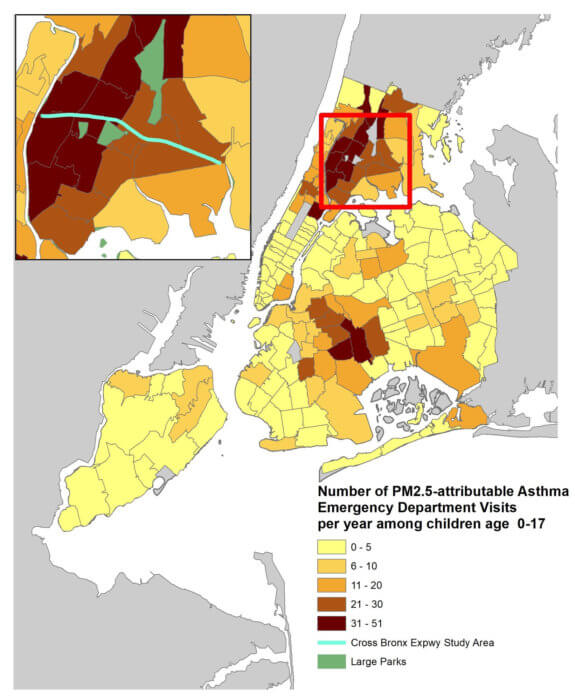
Part of the way Torres hopes to address the pollution surrounding the expressway, he said, is to secure federal funding to cap it — a concept that consists of building parks and other structures on top of highways to virtually push these roads underground, reduce noise and reconnect communities.
Torres said Monday that capping the Cross Bronx would likely be far more cost-effective than digging to restructure the highway. He said he would estimate the total cost would be less than $1 billion, for which he would try to secure federal dollars.
“This is not theoretical or hypothetical; this is an actionable proposal,” he said, noting that he and Sen. Chuck Schumer began seriously exploring this project back in April 2021.
Nilka Martell, an organizer with Loving the Bronx and proponent of a greener Cross Bronx Expressway, said at the press conference that some of her children and grandchildren suffer from asthma. She has lived by the expressway for close to 50 years.
“As a parent, holding your baby, seeing your child, feeling your child struggling to breathe is extremely frightening,” Martell said.
A lot of the health issues created by pollution and adverse environmental impacts, she said, transcends generations in her community — her granddaughter has also been treated for respiratory ailments. But Martell said the grant is a step in the right direction.
“Today is a result of grassroots activism. Today is a result of organizing,” she said. “This is what the Bronx looks like. This is what community looks like.”
Rep. Adriano Espaillat — who said he represents “the largest parking lot of the country” at the Monday press conference — and New York State Department of Transportation Commissioner Marie Therese Dominguez both also spoke in support of the feasibility study.
The first round of community meetings are scheduled to begin in February 2023, and a multiyear plan of the near- and long-term project proposals to improve the expressway and the surrounding neighborhoods is set to be presented in 2024.
Reach Camille Botello at cbotello@schnepsmedia.com. For more coverage, follow us on Twitter, Facebook and Instagram @bronxtimes

















